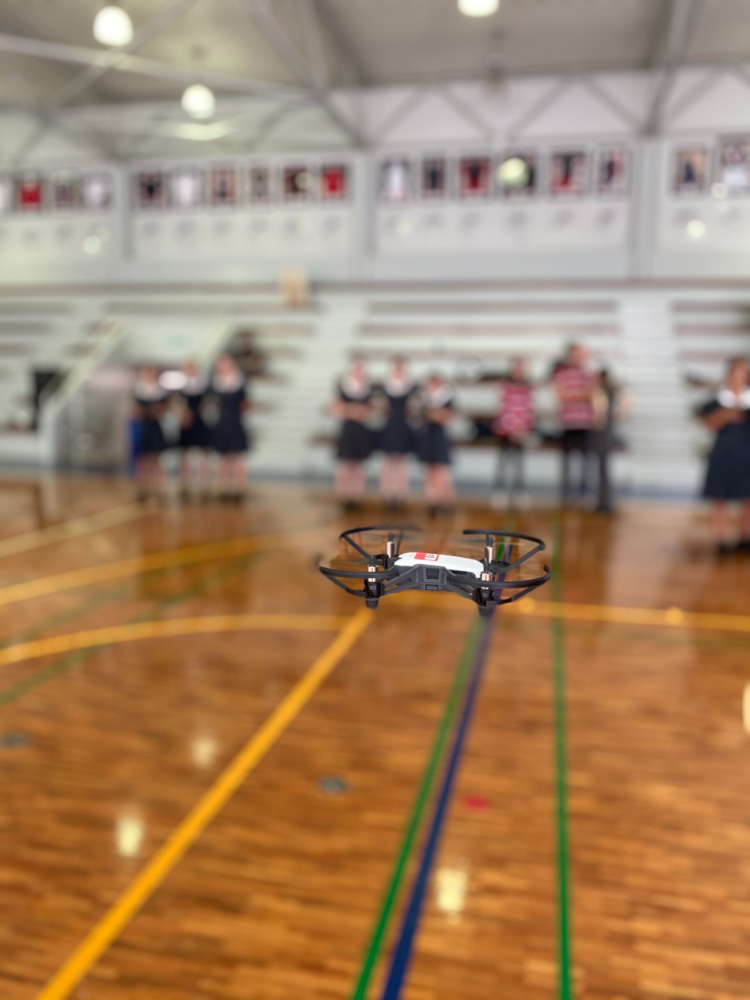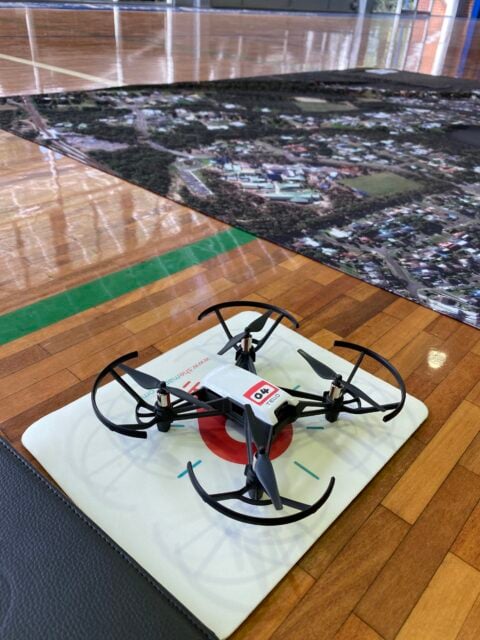Main Menu


A typical day in the life of a drone education instructor – 130 students, 10 drones lessons, 4 programs!
Sounds intimidating? As a certified drone instructor this is not something new. I didn’t realise how much I had missed it until I started with the first class of students.
Flying a drone with up to 30 students is not easy, but it’s all about keeping the flights simple and the pilots curious. By providing simple instructions to get pilots off the ground all of a sudden there is a realisation of just how much control they have over the DJI Tellos.
Thanks to the stability and ease with which a Tello hovers, pilots are put at ease very quickly. It is not long before boundaries of flight lanes are being tested, figure of eights are being attempted and the level of noise has increased dramatically from nervousness to excitement and exclamations of achievement.
With any technology there is always a certain amount of room for a wifi failure or some other issue. But throughout the four programs, I was able to assess that every student flew a drone successfully. The first flights manually are always the most exciting and it shows in the increase in excited conversation and the intermittent exclamations as students challenge themselves to fly more complicated flights.
I really enjoy the first flights as you can see the groups working together to achieve successful flights and the initial uncertainty of a crash is soon replaced with more discussion as they work out what happened and how to rectify the problem.
Working together as a group allows pilots to get an understanding of how a drone pilot operates in the real world. Below are two effective teaching strategies that you may want to incorporate into your own drone STEM curriculum.

Pymble Ladies College wanted a drone curriculum to introduce their students to drones and the industry opportunities that they provide. It was the Commerce and Economics department that had organised these programs. They could see the possibilities with flying drones and the multiple uses within the curriculum. Achieving learning outcomes from a different perspective.
The face-to-face programs were more than just flying drones; it was about looking beyond the skills and considering the different applications and where a drone could take you.
At the beginning of each program the students were asked where they had seen educational drones. The answers were short and usually related to photography, social media or defence. What She Maps was able to do in a small amount of time was to expose students to where drones are being incorporated into industry and how it is growing exponentially.
For example:
Each of these industries have or will have drones as part of the workforce, but what about all of the support behind them. From hardware and software, insurance, OHS, training, designing and building.
I was able to have short discussions with students and also staff who popped their heads in to take a look at the drones flying in the gym. There were many chats about personal experiences, but also what they could see drones doing in the future and especially with the teachers as to which subjects drones can branch into, not only digital technologies, but commerce, design technologies, maths and science.
Every Classroom Drone Essentials program has a real world challenge. This lent itself really well to the connection between drones and industry.
Before being involved in the She Maps drone lessons, many PLC students had a narrow concept of how drones are used in industry, but by being exposed and engaged in a real world problem that can only be solved with a drone, the students were able to then expand their knowledge and understanding of what drones are capable of.
Students are more likely to be involved in a drone education challenge if they can see a real world application. A simulation creates an effective learning environment that students can see themselves involved in. She Maps aims to create real world challenges that make students think about where drones might fit in the world and how they, the students, can be involved.
Initially it is a simple coding challenge with an emergency and rescue background. There are very little boundaries in regards to what students have to achieve. That sense of achievement when a coded drone completes a flight successfully or not successfully is not being assessed. What we want students to explore is what is possible with a drone.
Flying with PLC allowed me to get back into the classroom with a technology that I really enjoy using. There is instant gratification for myself and the students I’m instructing.
The biggest memory I will take from the 4 programs was that I was able to not only show students how to fly, but also how drones can take you to many different career paths, whether you want to fly them, support them, or use the data that they collect.
If you’d like to read more about drones in education, then check out the following articles that talks about what students can learn from educational drones and understand how you can fly drones indoors at schools.
She Maps is Australia’s leading expert in drone and geospatial education.
She Maps assist schools with the purchasing of drones, school-industry created drone and geospatial teaching resources and highly supportive teacher professional development.
Ready to buy drones for your school? We are an authorised DJI reseller in Australia

Subscribe by email and never miss a blog post or announcement.

She Maps aims to bring much needed diversity and support to STEM. We do this by providing drone and geospatial programs to teachers and schools across the globe.
At She Maps we acknowledge the Traditional Custodians of Country throughout Australia and their connections to land, sea, and community. We pay our respect to their Elders past and present and extend that respect to all Aboriginal and Torres Strait Islander peoples today.
Aboriginal and Torres Strait Islander peoples are advised that this site may contain names, voices, or images of people who have passed away.
Learn the 6 Steps to Launching a Successful Drone and Geospatial Program at your School
Take our resources for a spin and join the thousands of teachers who love our ready-to-teach classroom materials. Try one of our complete units of work for free.

